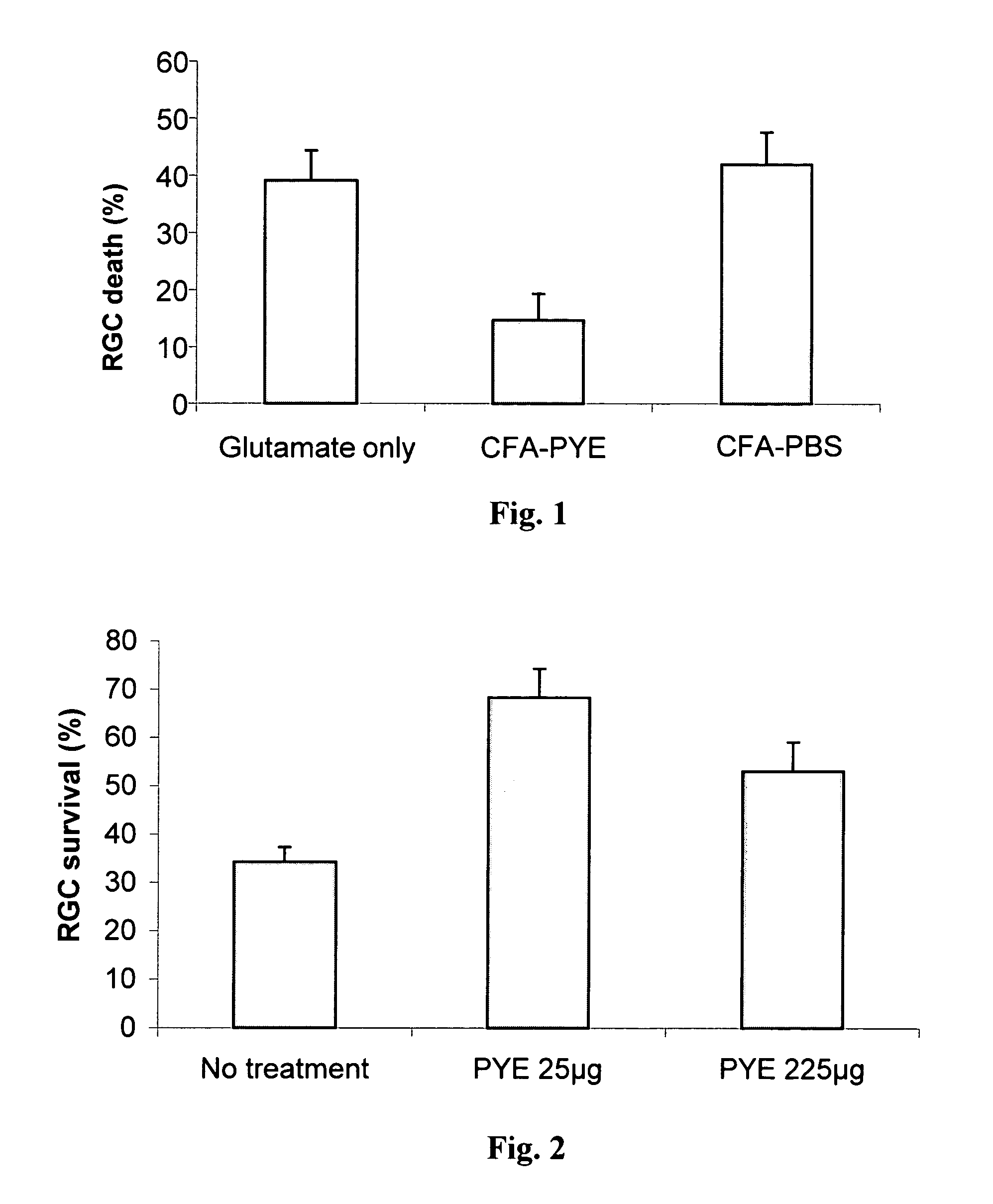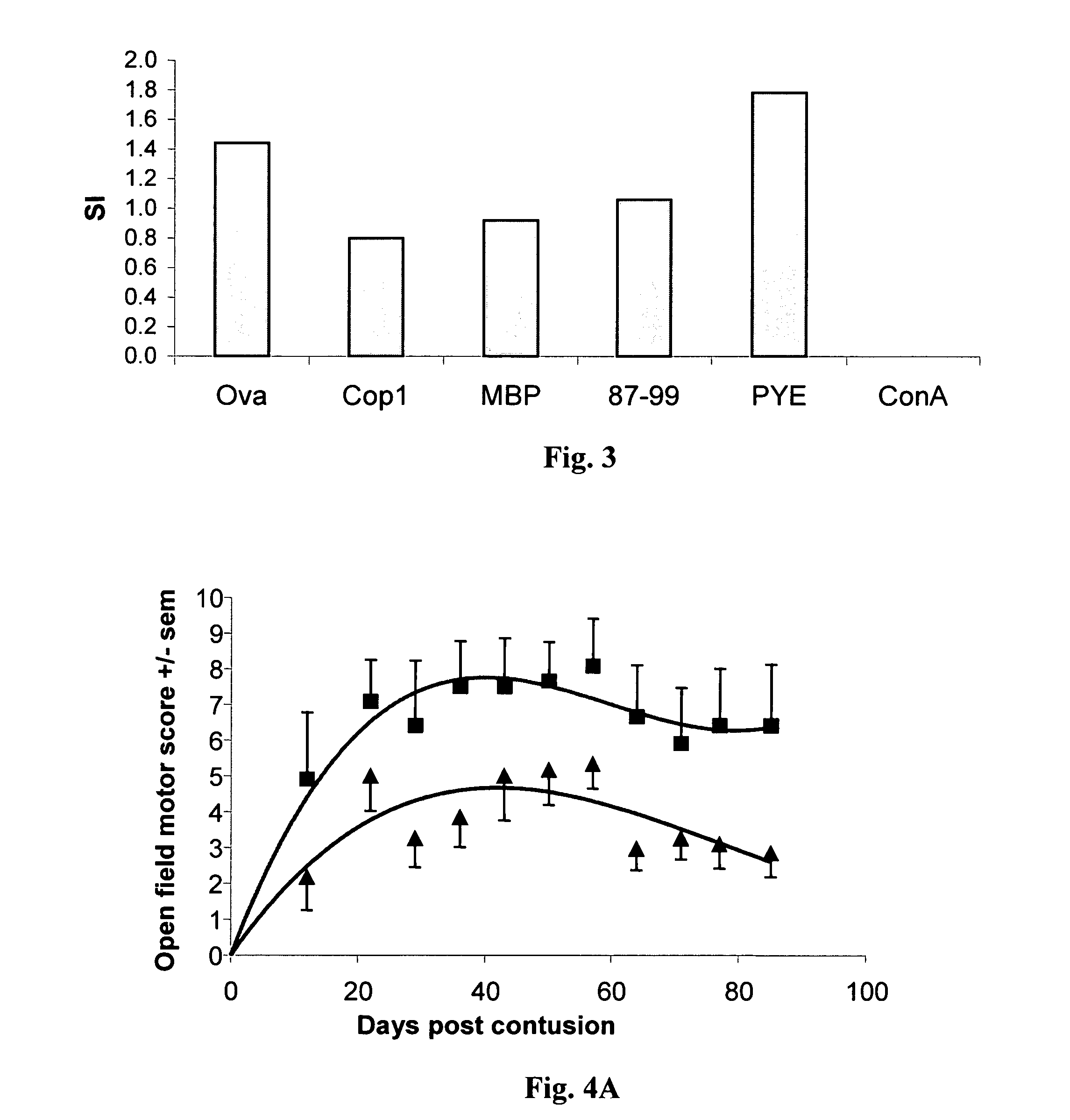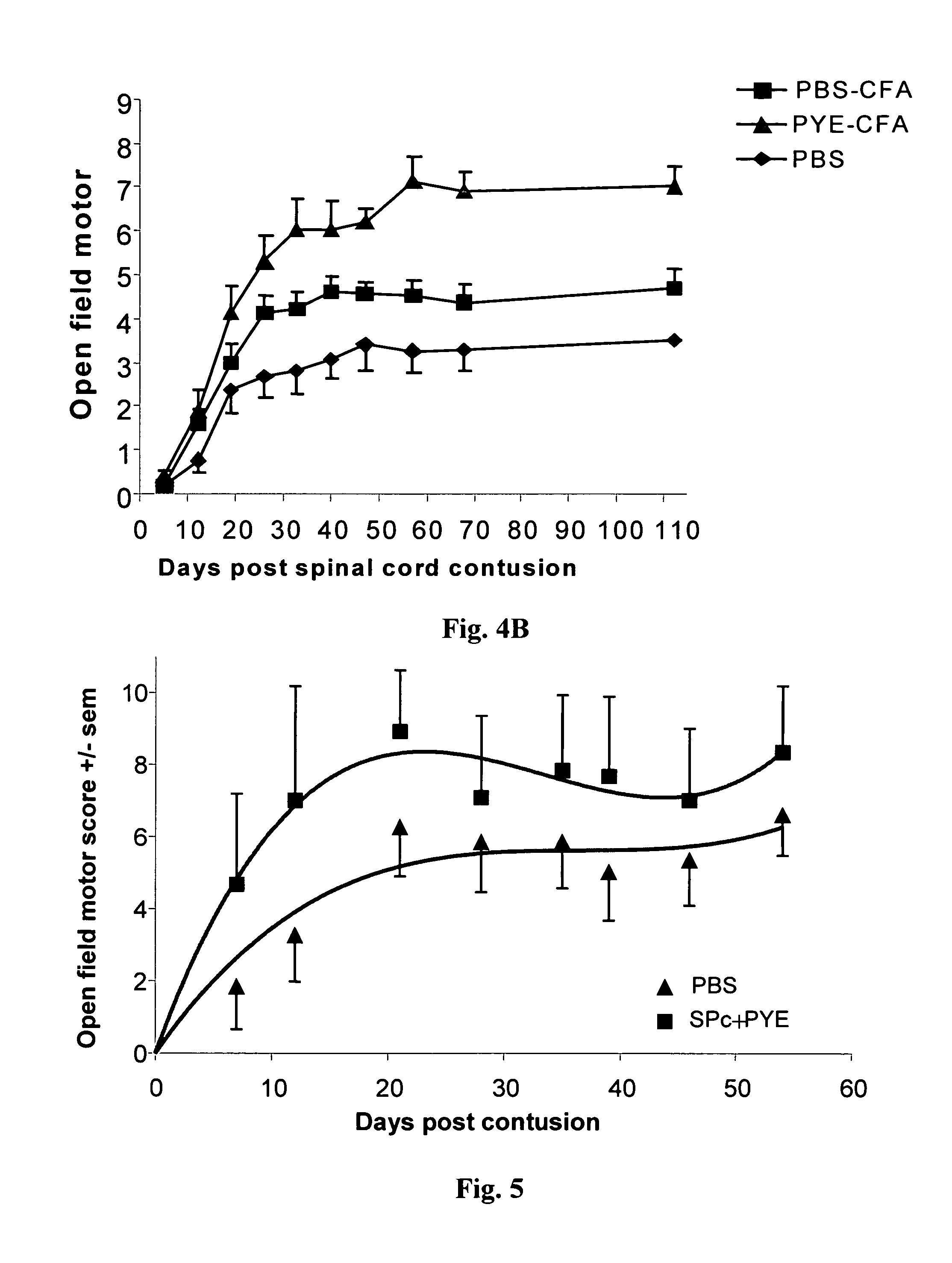Poly-Glu,Tyr for neuroprotective therapy
a neuroprotective therapy and polyglu technology, applied in the direction of antibody medical ingredients, peptide/protein ingredients, metabolic disorders, etc., can solve the problems of increasing the risk of adverse effects
- Summary
- Abstract
- Description
- Claims
- Application Information
AI Technical Summary
Benefits of technology
Problems solved by technology
Method used
Image
Examples
example 1
Immunization with Poly-Glu,Tyr in Adjuvant Protects Optic Nerve Fibers from Glutamate Toxicity
[0101]In order to find out whether poly-Glu,Tyr can impart a more general neuroprotection from hostile environmental conditions caused by glutamate-induced toxicity, the following experiment was conducted.
[0102]Injection of the excitatory neurotransmitter glutamate into the vitreal body of C57BL / 6J mice eye causes dose-dependent death of the cell bodies of optic nerve neurons. A previous study showed that the onset of RGC death is delayed (by more than 24 hours after glutamate injection) and is apoptotic-like.
[0103]In the present experiment, 8-week-old male C57BL / 6J mice were immunized SC with 100 μg poly-Glu,Tyr emulsified in CFA, 7 days prior to glutamate injection. A group of mice immunized at the same time with PBS emulsified in CFA (to rule out a non-specific effect of the immunization) and a group of non-immunized mice served as controls. Mice in all three groups received an injection...
example 2
Immunization with Poly-Glu,Tyr without Adjuvant Protects Optic Nerve Fibers from Glutamate Toxicity
[0106]To examine the efficacy of immunization with poly-Glu,Tyr without adjuvant to protect the neurons from glutamate toxicity, the retina of C57BL / 6J mice were exposed to excess amount of glutamate. The mice were divided into 3 experimental groups: (i) not immunized—negative control (n=9); (ii) immunized with poly-Glu,Tyr 25 μg / mouse (n=10); and (iii) immunized with poly-Glu,Tyr 225 μg / mouse (n=10). The treated groups were immunized with poly-Glu,Tyr dissolved in 100 μl PBS 7 days prior to intraocular glutamate injection. The number of RGCs that survived 7 days after exposure to elevated level of glutamate was counted and calculated as percentage of normal eyes. The results are shown in FIG. 2. RGC survival in the treated groups was significantly (t-test, p<0.001) higher than the negative control group. Upon exposure to glutamate, only 34% of the RGCs survived in the non-treated anim...
example 3
Activation of Splenocytes from Contused Animals
[0119]SPD rats were anesthetized and their spinal cords were exposed by laminectomy at the level of T8. One hour after induction of anesthesia, a 10-g rod was dropped onto the laminectomized cord from a height of 50 mm, using the NYU impactor (Basso et al., 1995 and 1996). Rats were killed 8-10 days after spinal cord contusion and their spleens were excised and pressed trough a fine wire mesh. The washed cells (2×106 / ml) were cultured in triplicate in flat-bottomed microtiter wells in 0.2 ml proliferation medium containing DMEM supplemented with L-glutamine (2 mM), 2-mercaptoethanol (5×10−5 M), sodium pyruvate (1 mM), penicillin (100 IU / ml), streptomycin (100 μg / ml), non-essential amino acids, and autologous rat serum 1% (vol / vol) with the antigen (15 μg / ml) or Con A (1.25 μg / ml), and irradiated thymocytes (2000 rad, 2×106 cells / ml). The proliferative response to different antigens namely Ova, Cop 1, MBP, the MBP peptide 87-99, poly-Glu...
PUM
| Property | Measurement | Unit |
|---|---|---|
| body weight | aaaaa | aaaaa |
| body weight | aaaaa | aaaaa |
| body weight | aaaaa | aaaaa |
Abstract
Description
Claims
Application Information
 Login to View More
Login to View More - R&D
- Intellectual Property
- Life Sciences
- Materials
- Tech Scout
- Unparalleled Data Quality
- Higher Quality Content
- 60% Fewer Hallucinations
Browse by: Latest US Patents, China's latest patents, Technical Efficacy Thesaurus, Application Domain, Technology Topic, Popular Technical Reports.
© 2025 PatSnap. All rights reserved.Legal|Privacy policy|Modern Slavery Act Transparency Statement|Sitemap|About US| Contact US: help@patsnap.com



